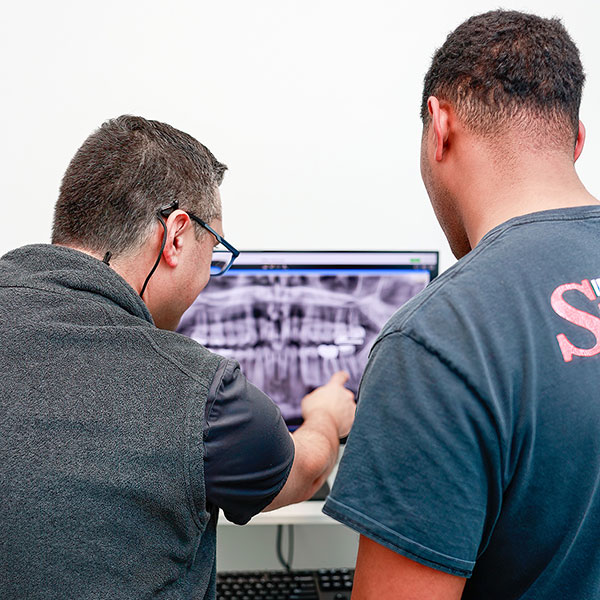
Reform Dentistry Fredericksburg and Spotsylvania, led by our experienced dentist, Dr. Aldouri, we understand that a healthy jawbone is crucial for the successful placement of dental implants. In cases where the jawbone has deteriorated due to tooth loss or other factors, Dr. Aldouri can perform bone grafting procedures. Bone grafts are essential in regenerating and strengthening the jawbone, providing a solid foundation for secure dental implants. This technique is a critical step in ensuring the long-term success of your dental implant procedure.

After tooth loss, the jawbone in that area can start to deteriorate over time. Bone grafting helps rebuild and strengthen the bone, making it suitable for implant placement.

Some individuals may naturally have insufficient bone density in their jaw. Bone grafts can augment the bone volume, making it possible to receive dental implants.

In cases of injury or infection that results in bone loss, bone grafting can aid in restoring the damaged jawbone.

A: Our team, including Dr. Aldouri, takes every measure to ensure your comfort during the bone grafting procedure. Local anesthesia is used to numb the area, and any post-operative discomfort can be managed with prescribed pain medication.
A: The duration of bone grafting varies depending on the complexity of the case and the amount of bone needed. Dr. Aldouri will provide a personalized timeline during your consultation.
A: In most cases, successful bone grafting makes patients eligible for dental implants. Dr. Aldouri will evaluate your specific situation and discuss your options during your consultation.
A: Coverage for bone grafting procedures can vary based on your dental insurance plan. Our team can assist in verifying your insurance coverage and providing information on associated costs.
We’re here to serve you with exceptional dental care at both of our state-of-the-art facilities. Find the nearest location to you and let us take care of your smile. Visit us today and experience the Reform Dentistry difference.
Reform Dentistry of Fredericksburg
Address: 5761 Plank Rd, Fredericksburg, VA 22407
Reform Dentistry of Spotsylvania
Address: 10009 Southpoint Pkwy Ste 201B, Fredericksburg, VA 22407


At Reform Dentistry, we believe that your smile is a reflection of your health and happiness. Led by the skilled and compassionate Dr. Aldouri, our dental practice is dedicated to providing you and your family with top-notch dental care in Fredericksburg and Spotsylvania.
5761 Plank Rd, Fredericksburg, VA 22407
10009 Southpoint Pkwy Ste 201B, Fredericksburg, VA 22407
Mon-Fri:
10:00AM – 6:00 PM
info@reformdentistry.com
(540) 237-1700
Copyright ©2024 Reform Dentistry All Rights Reserved. Powered By Horizon Light Inc